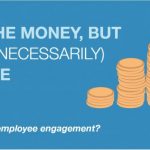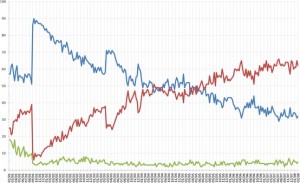 We all know that old saying, “Save the best for last.” Perhaps for the majority of us, we say it in passing with sarcasm attached to it. But what does it really mean? Is there any evidence behind the concept that the last is actually the best?
We all know that old saying, “Save the best for last.” Perhaps for the majority of us, we say it in passing with sarcasm attached to it. But what does it really mean? Is there any evidence behind the concept that the last is actually the best?
Let’s think about this for a minute. Can we really assume that just because something comes last in a series of options that it is indeed better than all other options we take into consideration? Or is it more likely that our memory about these options is being biased in some way that we are not fully aware of at the time? Some pretty intriguing research has been conducted in this area to better understand the psychology surrounding this particular aspect of decision making. Why is that last jellybean, for instance, the best? Or why, if you are the HR manager at your company, is the last candidate you consider typically the best or worst of all the other candidates you have considered for the job?
Of course, we all have our own understanding of why we choose and comprehend in this particular fashion, but underlying cognitive processes may be more complex than what we actually think. Well, complex and simple; complex in the sense that we are usually unaware of the psychology of choice, but simple in that this process is actually quite primitive in its logic.
Take the “jellybean” study for instance. A group of researchers wanted to identify what actually determines our decision making behaviors. Best options, as they discover, are often reliant on our own memory of these options. So in essence, what may be the best choice by our own terms may simply be a function of remembrance rather than a complex series of cost-benefit analyses that we consciously and subconsciously perform about the options presented to us.
Specifically, participants in the study were presented with two types of jellybeans, one type with good characteristics (fruit, sweet flavors) and other type with bad characteristics (dirt, earwax, and grass flavors). What the researchers found was that those who tasted the good jellybeans considered the last one they ate the best (47% preferred the last jellybean). Those who ate the bad jellybeans considered the first and second jellybeans as the more desirable ones (only 30% preferred the last jellybean). The researchers also repeated this experiment across a variety of different items, such as paintings, song clips, and faces – all with similar results.
In short, when we do not have the ability to evaluate all the options before us simultaneously, then biases begin to emerge in our decision making, particularly in terms of how recent the options are placed before us. When we have a variety of options before us that have been presented over a period of time, then we are more likely to choose the last option if indeed that option is a desirable one. For undesirable options, we tend to choose the first or second rather than the last. This is because the last options presented to us are clearest in our minds, and therefore trumps some of the features, desirable or undesirable, of past options.
So, what does this research mean for the average person? Firstly, it sheds light on the choices we make and why those options presented to us in recent memory play so heavily on our ability to make informed decisions. Secondly, because of this, we can come to realize the importance of weighing all options before making a decision. It is important to understand that the last option is not always the most appealing. If you are in a position of making significant decisions, then it will prove beneficial to weigh all options presented to you in an unbiased manner by revisiting past options against more recent ones. The best option is not always saved for last; it just sometimes may appear that way.





